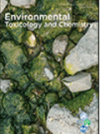Environmental Toxicology Mixtures of Cu, Ni, and Zn Act Mostly Noninteractively on Pseudokirchneriella subcapitata Growth in Natural Waters

Scientific abstract
Freshwater biota are usually exposed to mixtures of different metals in the environment, which raises concern because risk-assessment procedures for metals are still mainly based on single-metal toxicity. Because microalgae are primary producers and therefore at the base of the food web, it is of utmost importance to understand the effects of metal mixtures on these organisms. Most studies that have investigated the combined interactive effects of mixtures on microalgae performed tests in only one specific water. The objective of the present study was to test if combined effects of mixtures to Pseudokirchneriella subcapitata were the same or different across natural waters showing diverse water-chemistry characteristics. This was done by performing experiments with ternary Cu–Ni–Zn mixtures in 3 natural waters and with binary Cu–Ni mixtures in 5 natural waters. We showed that the ternary mixture acted noninteractively on algal growth, except in one water in which the mixture acted antagonistically. We suggest that a low–cationic competition situation in the latter water could be the reason for the antagonistic interaction between the metals. On the other hand, the binary mixture acted noninteractively on algal growth in all tested waters. We showed that both the concentration addition and independent action models can serve as accurate models for toxicity of ternary Cu–Ni–Zn and binary Cu–Ni mixtures to P. subcapitata in most cases and as protective models in all cases. In addition, we developed a metal mixture bioavailability model, by combining the independent action model and the single-metal bioavailability models, that can be used to predict Cu–Ni–Zn and Cu–Ni toxicity to P. subcapitata as a function of metal concentration and water characteristics.
Full reference (link):
Van Regenmortel, T. and De Schamphelaere, K. A.C. 2017. Mixtures of Cu, Ni, and Zn act mostly noninteractively on Pseudokirchneriella subcapitata growth in natural waters. Environ Toxicol Chem. doi:10.1002/etc.3999
